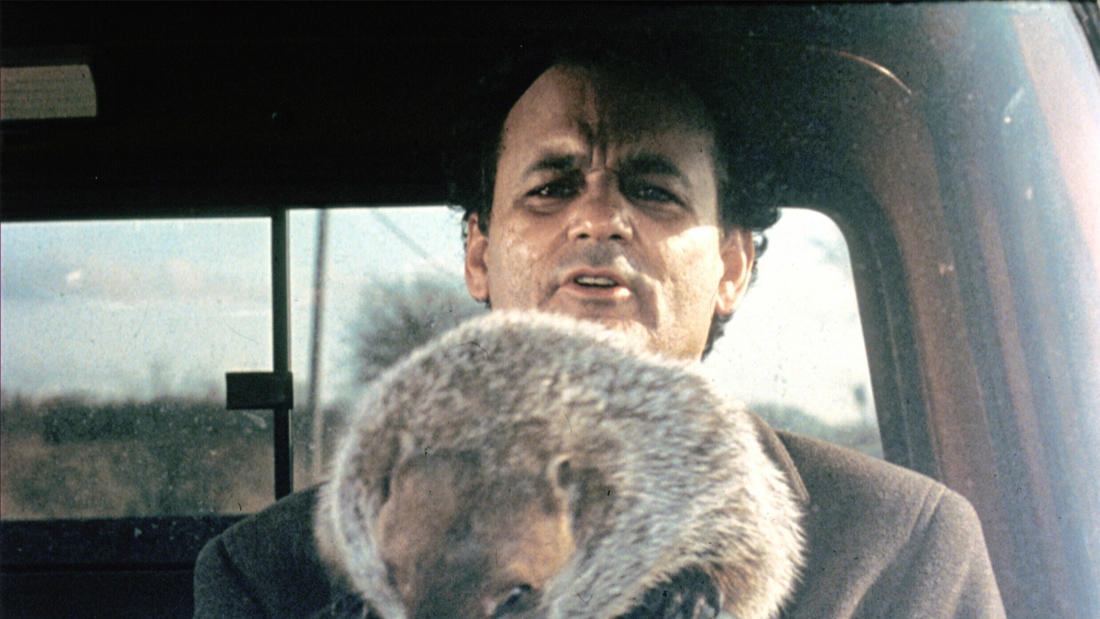
Center for Contemporary Arts Santa Fe, NM
Dr. Murray Gell-Mann
Nobel Prize-Winning Physicist; Distinguished Fellow, Santa Fe Institute
andDanny Rubin
Screenwriter
Groundhog Day— The Essence of Scientific Practice
Program Description
Dr. Murray Gell-Mann and Danny Rubin examined the question: Can Bill Murray help us understand the essence of scientific practice?
Presented At
Center for Contemporary Arts Santa Fe, NM
Film Synopsis
A weatherman finds himself living the same day over and over again.
Director Harold Ramis’s offbeat modern comedy classic tells the story of Phil Connors (Bill Murray), an arrogant, self-centered TV weatherman, assigned to cover the groundhog's annual appearance in Punxsutawney, Pennsylvania. It's his fourth year waiting on word from the rodent to determine the length of the remaining winter, and Phil couldn't be more open about his disdain for the town, his job, and his co-workers. When he awakens on what should be the following day, he inexplicably finds himself stuck in a time loop, dooming him to repeat his most hated day of the year, over and over again, until he finally gets things right.
About the Speaker
Dr. Murray Gell-Mann is a physicist, and the winner of the Nobel Prize for Physics in 1969 for his work pertaining to the classification of subatomic particles and their interactions. Dr. Gell-Mann is known for developing the concept of "strangeness," and gave the name "quark" to the basic building block of matter.
Dr. Gell-Mann graduated from high school at the age of 15 and entered Yale University, where he earned a bachelor's degree in 1948. Next came graduate study at the Massachusetts Institute of Technology (MIT), where he claims to have found out, for the very first time, what true scientific research can achieve. Totally committed to his work, he completed his doctorate in 1951, and proceeded to the Princeton Institute for Advanced Studies, where he had been awarded a research grant.
Dr. Gell-Mann's first academic appointment was in 1952 with the Institute for Nuclear Studies at the University of Chicago, where he started the work on elementary particles. He joined the faculty of the California Institute of Technology in Pasadena in 1955 and was appointed the Robert Andrews Millikan Professor of Theoretical Physics in 1967 (emeritus, 1993). A member of the National Academy of Sciences and the American Academy of Arts and Sciences, Dr. Gell-Mann was the recipient of the Dannie Heineman Prize of the American Physical Society in 1959 and of numerous special lectureships and honors.
He published a number of works on this phase of his career, notable among which are The Eightfold Way (1964) and Broken Scale Variance and the Light Cone (1971).
In 1984, he cofounded the Santa Fe Institute, a nonprofit center located in Santa Fe, NM, that supports research concerning complex adaptive systems and emergent phenomena associated with complexity. In “Let’s Call It Plectics,” a 1995 article in the institute’s journal, Complexity, he coined the word plectics to describe the type of research supported by the institute. In The Quark and the Jaguar (1994), Dr. Gell-Mann gave a fuller description of the ideas concerning the relationship between the basic laws of physics (the quark) and the emergent phenomena of life (the jaguar).
Dr. Gell-Mann was a director of the MacArthur Foundation (1979–2002) and served on the President’s Committee of Advisors on Science and Technology (1994–2001). In 2000, he became a member of the board of directors of Encyclopædia Britannica, Inc.
Danny Rubin is a screenwriter, actor, lecturer, and celebrity blogger. He wrote the screenplay to the 1993 comedy Groundhog Day, for which he received a BAFTA Film Award for Best Screenplay.
Rubin received a BA in biology from Brown University and an MA in radio, television, and film from Northwestern University. He has taught screenwriting at numerous universities and lectured on the topic at academic conferences since 1995. He is currently a Briggs-Copeland Lecturer on English at Harvard University.